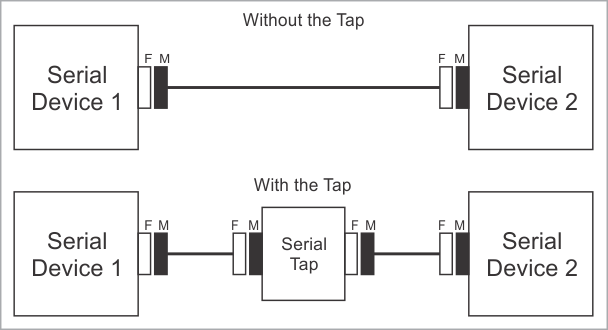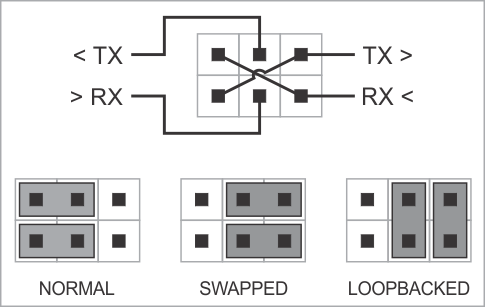The Serial Tap allows you to insert (wedge) it in between two RS232 devices. Here is how this is done.
Let's suppose that two serial devices are interconnected by a serial cable. Let's also suppose that the first device has a DB9-F connector, while the second device has a DB9-M connector. The serial cable is, therefore, of the M-to-F type.
To wedge the Serial Tap between these two devices, you will need the second M-to-F cable:

Of course, DB9 genders on the serial devices may differ from the above example, and so your serial arrangement may be different. To aid you in the "wedging process," each Serial Tap comes with two DB9 gender changers.
Jumper pairs
The Serial Tap has an additional useful feature allowing you to swap and loopback the signals in TX/RX, RTS/CTS, and DTR/DSR signal pairs. To achieve this, two jumpers are provided for each of the three pairs. There are three standard jumper configurations:
•Normal — In this position, the lines are arranged in such a way that wedging the Tap between the serial devices does not change anything. Meaning, TX on one end goes to RX on another end, and vice versa.
•Swapped — This swaps signals in a pair. Meaning, TX goes to TX, and RX goes to RX.
•Loopbacked — Both serial devices "receive back" their own signals. Meaning, the TX line on each side "comes back" through the RX line.
The following diagram illustrates the jumper arrangements. The diagram shows the jumpers for the TX and RX signal pair. RTS/CTS and DTR/DSR jumpers work in the same way.
